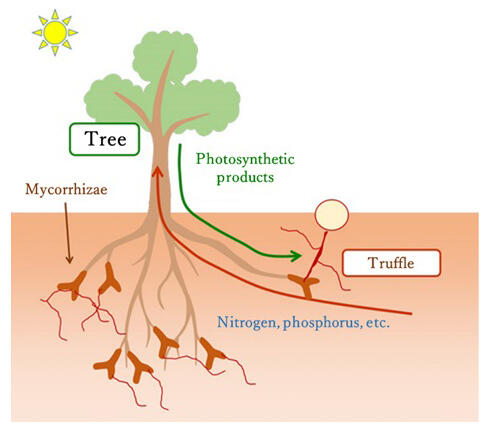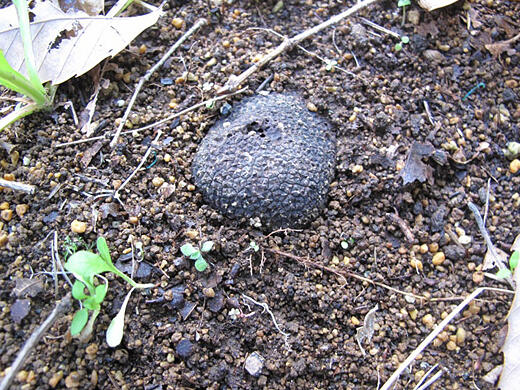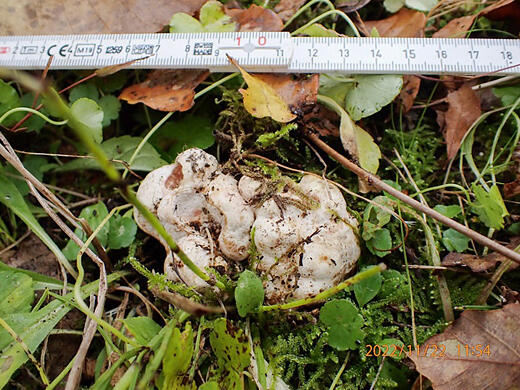A research group led by the Forestry and Forest Products Research Institute of the Forest Research and Management Organization and others has succeeded in artificially cultivating domestic black truffles, which are considered a luxury ingredient in Western cuisine. Last year, they also confirmed the artificial cultivation of white truffles. They will continue to explore the conditions under which both black and white truffles can grow stably and to develop the cultivation technology.
The Japanese name for truffle is 'Seiyoshoro.' Like Matsutake mushrooms, truffles are a member of the mushroom family and are mycorrhizal fungi that grow symbiotically on the roots of living trees. In Japan, more than 20 species of truffles grow in the wild, with some having potential as food ingredients. Around the year 2015, Dr. Takashi Yamanaka, who studies microbial ecology as Head of the Tohoku Research Center of the Forestry and Forest Products Research Institute, and his colleagues launched a project to determining the tree species and soil environments suitable for growing these fungi, with the goal of artificially cultivating domestic truffles.

Provided by the Forestry and Forest Products Research Institute
Two species were chosen as research materials for artificial cultivation: Tuber himalayense (black truffle) and Tuber japonicum (white truffle). The former has been found to grow wild in regions spanning from Hokkaido to Kyushu and the latter in those ranging from Tohoku to Chugoku. Yamanaka's group firmly believed that these species could be widely cultivated through artificial means in Japan.
Unlike Shiitake, Enoki, and Nameko mushrooms that grow using nutrients obtained from the logs or sawdust in which they are planted, truffle mushrooms grow by means of their mycorrhizal symbiotic interaction with trees. Artificial cultivation is considered difficult owing to the need to manage both the trees and the fungi.
The research group applied their knowledge gained from the artificial cultivation of Matsutake mushrooms, which are popular in Japan. They attached the fungus to the roots of Quercus serrata using a liquid made from ground truffle mushrooms.
To generate black truffles, seedlings of Q. serrata with the fungi attached to them were planted in a total of four test sites, including in Gifu, Ibaraki, and Kyoto Prefectures, in April and July 2016. The generation of mushrooms was checked every year, mainly in autumn. In October 2023 (the 7th year), two spherical black mushrooms, weighing approximately 50 grams combined, were found growing on the ground surface at the test site in Gifu Prefecture. Genetic analysis verified that the mushrooms had not originated from the soil but were from the truffle fungus inoculated into the Quercus seedlings.

Provided by the Forestry and Forest Products Research Institute

Provided by the Forestry and Forest Products Research Institute
According to Yamanaka, black and white truffles appear to require different soil acidity levels for growth. Black truffles seem to prefer alkaline soil; therefore, soils were treated with lime before planting the seedlings. By contrast, no clear differences in temperature or moisture content were observed among the test sites where black or white truffles grew or among those in which mushrooms did or did not grow.
In the future, the research group will further advance the developed technology to ensure stable truffle generation, while checking whether mushrooms continuously grow in the same sites every year. Yamanaka said, "Similar to the results for Matsutake mushrooms, simply controlling the moisture content, temperature, and other factors in a laboratory will not result in truffle mushroom growth. Just as pine forest management, actions such as raking up fallen leaves and cutting down bushes, are the key to the growth of Matsutake mushrooms on the ground, we would like to clarify the conditions under which truffle mushrooms grow, including land use surrounding the test sites."
The results of this research on black truffles were announced in a press release by the Gifu Prefectural Research Institute for Forest and the Forestry and Forest Products Research Institute on December 4, 2023.
Original article was provided by the Science Portal and has been translated by Science Japan.




